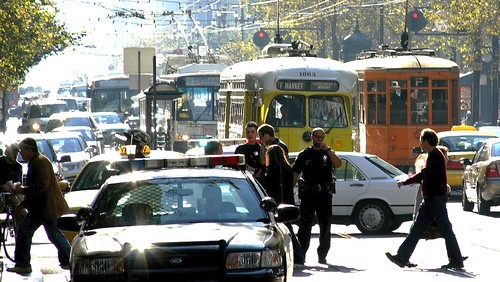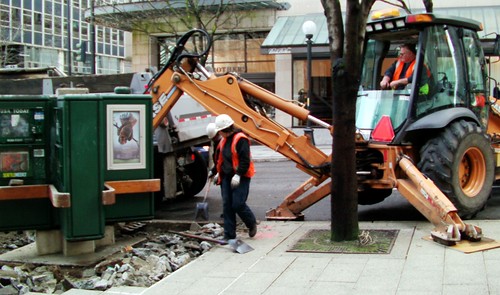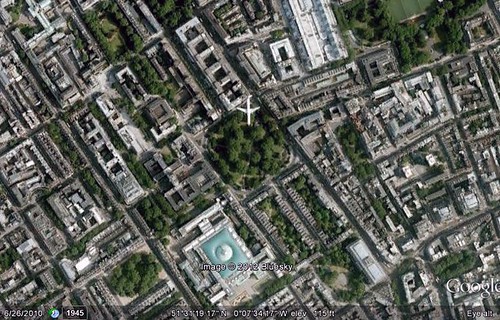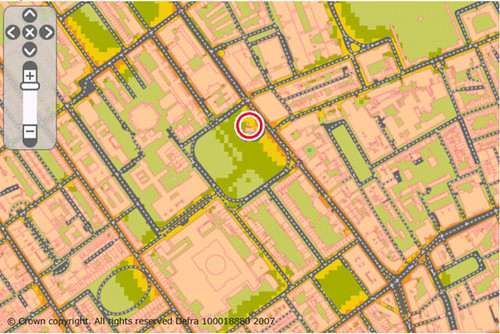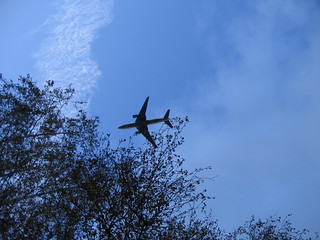Taming the sound of the city: dealing with noise pollution
About two decades ago, my friend Bob – a mover and shaker of sorts in the art world – took me to an artist's studio in a (then, at least) scruffy area of lower Manhattan. The artist we were meeting, whose name I have long since forgotten, worked in the medium of environmental sound. His studio was full of wires, speakers in odd places, and control boards. He was working on some installations in public spaces where he would create low-volume sound that a passer-by would notice only when it stopped, meaning that to the listener the entire experience was created by memory.
I was fascinated, partly because the whole idea of ambient sound was intriguing, but also because it suggested that our ability to perceive sound was less than straightforward. We've all had the experience of being on a plane or in a restaurant where a small child was crying loudly, wondering why the parents didn't seem to be bothered at all. Would it have been different if it had been someone else's child? Had they become so accustomed to it that they didn't notice or weren't affected?
Not so good for our health
The answers to these questions matter not just to our ability to relax and enjoy life but also to our mental and physical health. Noise is all around us and continues to worsen, according to researchers Lisa Goines and Louis Hagler, writing in a 2007 article published in the Southern Medical Journal. Sustained growth in highway, rail, and air traffic are especially concerning, say the researchers, who assert that "in a way that is analogous to second-hand smoke, second-hand noise is an unwanted airborne pollutant produced by others; it is imposed on us without our consent, often against our wills, and at times, places, and volumes over which we have no control."
Goines and Hagler document and annotate seven adverse health effects of noise:
- Hearing impairment
- Interference with spoken communication
- Sleep disturbances
- Cardiovascular disturbances
- Disturbances in mental health
- Impaired task performance
- Negative social behavior and annoyance reactions
In the 1970s, when the US Environmental Protection Agency had a noise control program, the agency established that average outdoor residential sound levels below 55 decibels (the lower end of the sound range produced by dishwashers or air conditioners) were generally acceptable. For indoors, the acceptable average levels were defined as less than 45 dB, which would appear from noise tables to be somewhere in between a "quiet library" and rainfall. (EPA's office was subsequently dismantled by the Reagan administration.)
Goines and Hagler write that it only takes 30dB, however, to disturb sleep. Cardiovascular effects begin to be seen after exposure to sounds at 65dB. Noise levels above 80 dB "are associated with both an increase in aggressive behavior and a decrease in behavior helpful to others." Depending on the duration of exposure, hearing impairment can begin at around 85 dB, "roughly equivalent to the noise of heavy truck traffic on a busy road."
Traffic noise in the city
With respect to noise pollution from vehicle traffic, consider the three very interesting images below, each showing the area containing and around one of my favorite city parks, Russell Square in London's Bloomsbury district.
The first is a basic satellite photo obtained via Google Earth. Russell Square is in the center, the blue-roofed British Museum south and slightly to the west of it. (It is a quirky coincidence that the satellite apparently caught a jetliner flying right over the Square, one hopes at considerable distance.)
Next, we have a map from the British government showing roadway noise levels. The purple areas along the busier streets represent average (day and night) levels above 75 dB. The pure green areas, mostly interior courtyards, are below 55 dB. The other colors are in between; notice how Russell Square itself has a noisy side and a quieter side, which is undoubtedly due to a difference in traffic volume. In general, noise goes down inside the parks and green squares, suggesting once again that good things come along with urban nature.
The third map shows the neighborhood at night. All is (relatively) calm. Only now do we get outdoor average ambient sound levels below 50 dB, represented by light green. This suggests that, had the government mapped daytime-only noise, the resulting map would show much higher levels than either of these, since what we have is a full average.. (Go here to see the full color-coding legend and to look at other parts of the UK. You will need a postal code for the area you want to view.)
So the good news is that, in the heart of a city such as London with many courtyards and parks, we can find relatively quiet places. But we need to get away from busy streets in order to do so. I suppose that should surprise none of us. But residents of New York City may not be so lucky: maximum noise levels on NYC subway platforms have been measured at 108 dB, rising to 112 dB inside the cars, according to Goines and Hagler. For comparison, that's about the level you would expect to hear from a chainsaw at a distance of one meter. (It's also about the level of that baby on the airplane.)
At best, noise can be distracting. But the distraction can have significant consequences. Rick Weiss wrote in The Washington Post:
"It was a 'natural' experiment in Germany that helped clinch the case [that noise interferes with learning], when the old Munich airport was shut down and a new one was opened at a distant site. Tests done on third- and fourth-graders -- before that switch, soon after it and again later on -- showed that students near the old airport initially scored lower than others on tests of memory and reading but improved after the airport closed, while their counterparts living near the new airport saw a decline in scores after the switch occurred.
"Noise that invades a classroom may make it hard for students to hear the teacher, of course. But blood tests done on the Munich children helped reveal a more insidious biological mechanism through which noise wreaks much of its havoc. Children near the working airports had significantly higher levels of adrenaline and cortisol -- the body's so-called stress hormones."
Weiss's article reports that more than 100 million Americans are regularly exposed to noise levels in excess of the 55 dB deemed by EPA to be reasonable.
Not all sound is equal
Which brings us back to my artist acquaintance and his attempts to manipulate ambient sound in public spaces. Writing in Next American City, Matt Bevilacqua says that acoustical experts in the new field of ambisonics are working to engineer urban soundscapes that involve "mitigating certain abrasive noises (like traffic) while emphasizing more pleasant ones (like birdsong)." The critical idea behind the efforts is not the technology but the recognition that not all sounds are created equal, even at comparable levels of loudness.
Heck, I have a personal example: when NRDC's offices changed locations a year or so ago, I moved from a very quiet corner to a very, um, lively hallway where my colleagues -- good guys every one -- seem to choose speakerphones for even ordinary one-on-one conversations. Our new quarters represent improvement over the old in many ways, but sound insulation is nonexistent.
So I brought a little ambient sound machine, procured from Brookstone, into my office and sometimes use the sounds of surf, rainfall, and even thunderstorms to mask their voices. I also pull out noise-cancellation headphones, which are engineered to mask some sounds and not others, from time to time.

"Antonio and his colleagues have the help of new technology that allows them to accurately portray what experiencing a hypothetical soundscape would be like. Want to hear how different a commercial street would sound if closed to traffic? How about the impact of putting a fountain in a public square (and all the singing birds it would attract)?
"The significance here is that the public can get an understanding of sound that jargon-laden studies and reports simply cannot offer. Ambisonics give engineers and ordinary people a 'common vocabulary,' as Antonio puts it, to figure out which noises they'd want in their cities, and which noises they wouldn't."
Much as smart growth figures out how best to locate and shape future development instead of trying to pretend that we can make it go away in a growing society, these guys are figuring out how best to shape the sounds around us rather than focusing on the less-effective strategy of trying to reduce overall sound levels without distinguishing between the pleasant and unpleasant.
I find that both fascinating and encouraging, though I'm not sure how it will help with my neighbor's annoying leaf blower.
Bonus fact: Charlie Gillett's book Sound of the City is a terrific history of the formative years of rock and roll.
Kaid Benfield writes (almost) daily about community, development, and the environment. For more posts, see his blog's home page. Please also visit NRDC's Sustainable Communities Video Channel.

